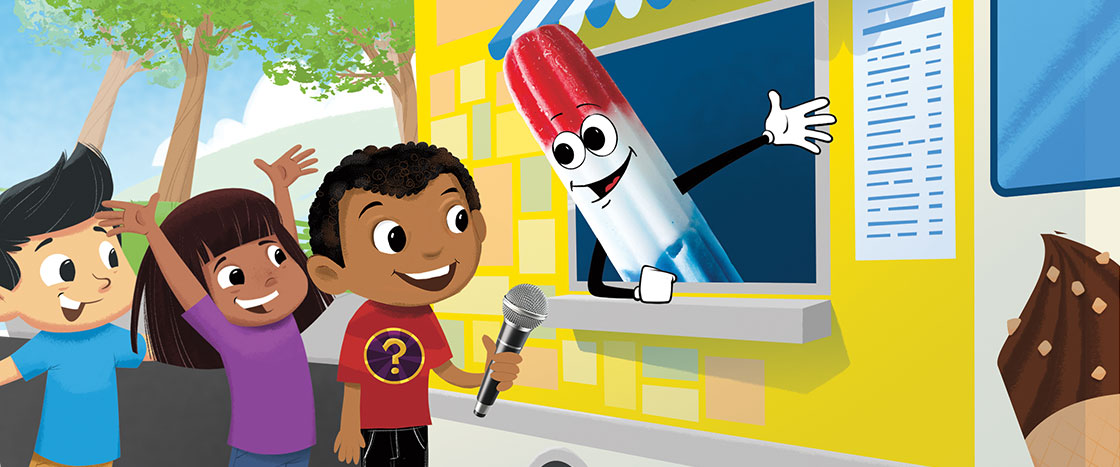CHARLES LEHMAN
Hi! I’m Question Mark.
Before you read, practice saying these words:
- invented
- sugary
- icicles
- Epperson
- Epsicles
- Popsicle

Question Mark learns more about this tasty snack.
CHARLES LEHMAN
Hi! I’m Question Mark.
Before you read, practice saying these words:
1) Question Mark: I am here with an ice pop! I have so much to ask you.
Ice Pop: Sweet! Let’s go, bro!
2) QM: Who invented the first ice pop?
IP: The story goes that in 1905, a young dude named Frank Epperson invented the first ice pop when he was 11 years old. It was an accident!
3) QM: Really? How did he do it?
IP: Frank mIxed some sugary soda powder with water. Then he left the sweet liquid outside in the cold all night by mistake. When he went for it the next day, it was frozen! So he picked it up by the wooden stick he had used to stir it. He licked his frozen drink. It was cold, sweet, and yummy!
National Archives
Years ago, you could buy an ice pop for one nickel!
4) QM: Wow! What did Frank do with his invention?
IP: When Frank became a grown-up, he started selling his ice pops at the park. He called them “Epsicles,” which is his last name and the word “icicles” smushed together. Years later, he gave his ice pop invention a brand-new name. He called it the “Popsicle.” That name is still popular today!
5) QM: Do you go by any other names, Ice Pop?
IP: In England, they sometimes call me an “ice lolly.” I’ve been called a “freezer pop” too.
6) QM: When is the best time to eat an ice pop?
IP: I’m a great treat for when the weather is hot and the sun is shining. Just be sure to finish before I melt!
Arina P Habich/Shutterstock.com
7) QM: Thank you for your time, Ice Pop! You’re really cool!
IP: You are too, bud!
More About the Article
Social Studies Focus
American symbols; Economics
Social-emotional Learning Focus
Cooperation (partner reading)
1. BEFORE READING
Preteach Vocabulary (3-5 minutes)
2. PRETEACH NAVIGATING THE PAGE (3 MINUTES)
3. READ THE INTERVIEW MULTIPLE TIMES (15-30 MINUTES)
NOTE: On our website, you can hear this interview read aloud, with each word highlighted along the way. Kids can listen to it to hear fluent reading modeled for them.
1. BEFORE READING
Assign Vocabulary Slideshow (10 minutes)
2. READ THE INTERVIEW
Here are three ways to use this feature if you are doing remote learning.
Remote Option A: Live Synchronous Instruction (15-30 minutes)
Remote Option B: Family Fluency Activity (15-30 minutes)
Remote Option C: Family Fluency Activity (15-30 minutes)
After Reading ELA Focus: Vocabulary (15 minutes)
Craft Extension: Make a Microphone (20 minutes)
Enrich the Learning: Paired Text Opportunities (time amount varies)
Pairable Text Poem,“Ice Pops, Ice Pops” (page 32)